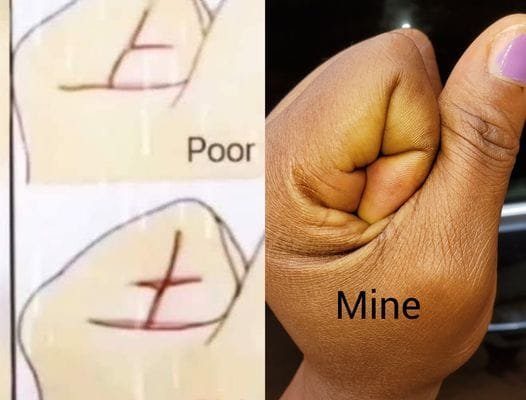Palmistry, also known as chiromancy, is a fascinating practice with ancient roots. This art involves analyzing the lines, shapes, and patterns on a person’s hands to uncover insights into their character or even predict their future. For centuries, many have believed that the lines etched into our palms hold the secrets to our lives, including indications of wealth, luck, and other personal traits. While it’s a tradition steeped in cultural lore, palmistry continues to captivate curious minds today.
Unveiling Wealth Lines in Palmistry
Within palmistry, specific markings and patterns on the hands are believed to reveal financial prosperity—or lack thereof. For instance, some interpretations suggest that faint, crossed lines near the thumb might point to financial struggles, while bold and well-defined lines or crosses in other areas of the palm are seen as indicators of success and affluence. These so-called “wealth lines” are thought to provide a glimpse into a person’s financial potential and future.
Visual representations often accompany these ideas, showing palms with faint or indistinct lines labeled as “Poor” and those with prominent, clear lines labeled as “Rich.” These depictions humorously suggest that financial destiny might be “written” in one’s hands. Although such imagery is often light-hearted, it reflects a deep-rooted belief in the connection between palm lines and life outcomes. For some, it’s an entertaining concept; for others, it’s a symbolic guide to understanding their journey.
The Cultural Roots of Palmistry
Palmistry holds significant cultural importance and has been practiced in various forms across the globe. In many traditions, the lines on the hand are believed to offer clues about a person’s destiny, personality, and even their financial potential. Specific configurations, such as crosses, forks, or unique intersections, are thought to represent different aspects of life, including success in wealth, relationships, and health.
What makes palmistry particularly intriguing is its cultural diversity. In some societies, a specific line shape might signify prosperity, while in others, the same line could be interpreted as a sign of romance or creativity. These varying perspectives reflect the ways in which different cultures have woven palmistry into their folklore and spiritual practices. The richness of these interpretations highlights palmistry’s enduring appeal as a tool for self-discovery and reflection.
Modern Skepticism and Palmistry Today
Despite its historical and cultural significance, palmistry is often met with skepticism in the modern world. From a scientific standpoint, it is considered a pseudoscience, as there is no empirical evidence to support the notion that hand lines can reliably predict a person’s financial status or future. Critics argue that the practice is subjective and lacks the measurable accuracy required to classify it as a legitimate science.
Today, most people approach palmistry with a playful or symbolic mindset rather than as a serious predictive tool. It is often compared to reading horoscopes or using tarot cards—activities that many enjoy for their entertainment value and the introspective questions they provoke. While some individuals firmly believe in the insights palmistry offers, most view it as an interesting cultural tradition rather than a method for making significant life decisions.
Palmistry as a Lens into Human Curiosity
One reason palmistry continues to intrigue is its connection to humanity’s timeless quest for meaning. The idea that the lines on our hands might hold clues to our fate taps into a deep desire to understand ourselves and the world around us. Whether or not one believes in the predictive power of palmistry, it serves as a compelling metaphor for the mysteries of life.
Palmistry also reflects the diversity of human thought. Across cultures, its interpretations have evolved to include elements of spirituality, folklore, and psychology. This adaptability has allowed palmistry to remain relevant, even as modern science challenges its claims. It endures as a bridge between the mystical and the tangible, offering a unique perspective on how we interpret signs and symbols.
Conclusion: A Timeless Tradition
While palmistry may not be grounded in scientific evidence, it continues to be a source of fascination and enjoyment for many. Its rich cultural history and symbolic interpretations make it an enduring practice that invites us to explore life’s mysteries in a unique way. Whether you’re captivated by the idea of wealth lines or simply curious about the stories our hands might tell, palmistry offers a playful yet profound lens through which to view the human experience.
In today’s fast-paced world, traditions like palmistry remind us of humanity’s enduring desire to connect with something greater than ourselves. Whether approached as a light-hearted pastime or a meaningful exploration, palmistry remains a fascinating way to reflect on life, destiny, and the paths we choose to take. So, the next time you glance at your palm, you might find yourself wondering: Could these lines hold more meaning than meets the eye?



